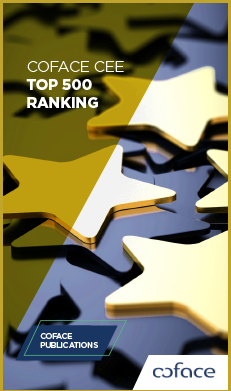

Dominican Republic
Synthesis
major macro economic indicators
| 2020 | 2021 | 2022 (e) | 2023 (f) | |
|---|---|---|---|---|
| GDP growth (%) | -6.7 | 12.3 | 4.9 | 4.2 |
| Inflation (yearly average, %) | 5.6 | 8.5 | 8.8 | 5.7 |
| Budget balance (% GDP) | -7.9 | -2.9 | -3.0 | -2.7 |
| Current account balance (% GDP) | -1.7 | -2.8 | -3.4 | -2.4 |
| Public debt (% GDP) | 71.1 | 62.1 | 59.3 | 57.6 |
(e): Estimate (f): Forecast *Non-financial public sector
STRENGTHS
- Main tourist destination in the Caribbean
- Remittances from its diaspora
- Strong infrastructure network
- Free trade agreement with the US (CAFTA-DR) and economic partnership agreement with the EU
- Institutional stability
WEAKNESSES
- Dependent on US economic conditions
- Dependent on the price of gold (the mining industry accounts for about 20% of GDP)
- Poor electricity supply
- Limited manufacturing activity concentrated in free trade zones with little connection to the domestic economy
- High levels of poverty and inequality, and low tax revenues (14% of GDP)
- Crime linked to drug trafficking
- Inequality (Gini coefficient of 0.40)
- Widespread corruption
Risk assessment
Growth to slow slightly in 2023, still driven by tourism and remittances
Dominican growth remained resilient in 2022 despite inflationary pressures. Sustaining the rebound in tourism is the Covid-19 vaccination coverage rate: more than 40% of the population had been vaccinated at the beginning of 2022. As far as 2023 is concerned, growth is expected to weaken only slightly. Despite the restrictive monetary policy of the Central Bank of the Dominican Republic (repo rate at 3.00% at the end of November 2021 compared to 8.25% at the end of October 2022), private national investments (20% of GDP) should continue to support the tourism sector (16% of tourism). Similarly, despite the rise in US rates, FDI (3.2% of 2022 GDP in total) should continue to gradually increase towards the tourism sector (FDI increase of 0.1% of GDP for 2023). US companies are expected to continue their nearshoring strategy. To this end, investments in their local industrial presences will increase. (USD 1.58 billion increase for 2023) Thus, the construction of tourist infrastructures will continue in Cabo Rojo-Pedernales (USD 2.245 billion over 10 years). Public investment in 2023 will be concentrated on the education sector (0.6% of GDP). A government emergency plan (USD 1.9 million) will mitigate the damage caused by Hurricane Fiona in September 2022. Nevertheless, the growth rate will be slightly lower than in 2022. Despite being halved, inflation will weigh on household consumption (67% of GDP). The slowdown of North American and Spanish economies will bite into remittances from the Dominican diaspora (8% of GDP for 2023). However, household purchasing power will benefit from the prolonged fuel subsidy (RD$400 million since the summer of 2022) and from the resilience of the tourist industry which provides a large number of jobs and even informal employment. Last, the global slowdown, particularly the US economy, will weaken exports (22% of GDP in 2021), 54% of which is destined for the United States. The mining industry (around 20% of GDP) will suffer from the slight decrease in gold exports due to a volume effect. The pace of non-mining exports (tourism, tobacco, medical devices, electronics, textiles) will decelerate slightly.
Fiscal prudence and moderate current account deficit despite inflation
In 2022, the government deficit remained at a pre Covid-19 level, thanks in large part to inflation-driven revenue growth and to the end of the latest fiscal stimulus measures. This has almost offset the additional spending on household assistance to meet rising food and energy bills. In 2023, despite the government’s frugal policy, the public deficit-GDP ratio will only decrease minimally. On the one hand, public revenue (14.7% of GDP in 2022) will continue to rise in line with growth, supported by fiscal consolidation and the services sector (63% of GDP). On the other hand, public spending should, at best, only decrease slightly by less than 1 point of GDP. On the electoral side, primary expenditure (14.5% of GDP) will focus on increasing social transfers and possibly extending certain aid measures to households to combat the high cost of living. Investment in transport infrastructure will continue in Santo Domingo. Debt servicing expenses will remain modest (3% of GDP). Moreover, the public deficit continue to be financed mainly by bond issues (USD 3.6 billion of sovereign bonds placed). Recourse to bank financing will be limited mainly to public investments. The debt ratio will continue to decline as a result of growth and the maintenance of the primary surplus (i.e. excluding interest).
With regard to the country's external accounts, global inflation widened the current account deficit in 2022. Rising energy export bills have also widened the trade deficit. The income balance suffered from increased repatriation of profits by foreign companies. The current account will remain in deficit in 2023. Rising non-energy imports (over 21% of GDP by 2023) and falling gold exports will maintain the trade deficit (around 7% of GDP by 2023). Lower remittances from the diaspora (expected to fall by 0.3% of GDP) are likely to reduce the income balance (4.3% of GDP by 2023). However, this current account deficit will remain moderate. The robust tourism industry, even if smaller than what it was, will continue to contribute to the surplus of services. The external deficit will be financed by FDI and financial borrowing. The reserves of the Central Bank of the Dominican Republic are expected to cover at least four months of imports.
The fight against corruption continues and Haitian instability is a concern
Centrist President Luis Abinader took office in August 2020 and has a majority in Parliament (18 of the 32 seats in the Senate and 92 of the 190 seats in the Lower House). He is committed to fighting corruption and crime. To this end, his government has embarked on an uncertain reform of the constitution aimed at guaranteeing the independence of the Public Ministry and the Central Electoral Council. Despite his involvement in the Pandora Papers scandal, he has maintained a high level of popularity thanks to the Covid-19 vaccination campaign and the strong economic rebound of 2021. The next general election is due to be held in 2024.
Diplomatic relations between the Dominican Republic and Haiti have deteriorated further since the assassination of Haitian President Jovenel Moïse in 2021. Since February 2022, the Dominican authorities have begun construction of a border wall to stem the influx of Haitians, who are heavily involved in agriculture and construction. This concrete barrier will extend over 164 km of the 392 km border. In so doing, the country wishes to protect itself against the insecurity of its Haitian neighbour. In addition, the Dominican government is stepping up the expulsion of illegal Haitians. Despite US mediation, any breakthrough in their relationship would seem to be impossible without improvement in the security and economic climate in Port-au-Prince.
Last updated: April 2023



